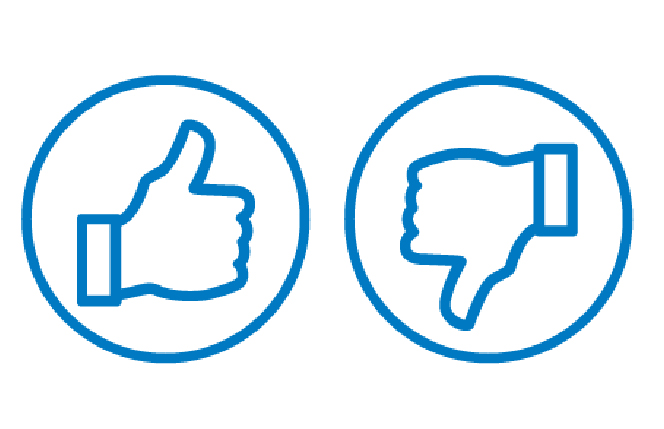Protecting Your Breast Health: Know Your Risk Factors And Get Screened
Jul 09,2024
Read Time 5 Minutes

It is well known that breast cancer affects a significant number of women. In fact, it is the second most common form of cancer in women, with 1 in 8 developing the disease at some point in their life. This is why regular screenings are important. They help find the cancer early when it is still localized, before it has a chance to spread, and it is more easily treated.
The Basics On Breast Cancer Screenings
The most recent screening recommendation is that women who are at average risk for breast cancer should get a mammogram every two years between the ages of 40 and 74. It’s natural to feel intimidated by breast cancer screenings at first, but you can put your mind at ease by learning about the different types of screenings available and what to expect.
- Mammogram — This is the most common screening for breast cancer. It involves pressing the breast between two firm plates for a few seconds in order to spread out the breast tissue and take a low-dose X-ray. It may cause some discomfort, but it is a quick process and will produce images your care team can review for any issues.
- Breast ultrasound — This screening can be helpful for women with dense breasts, meaning they have more connective breast tissue that makes tumors harder to detect on a regular mammogram. Talk to your doctor about your breast density and whether this screening may be helpful.
- Breast MRI — This screening is typically recommended in addition to an annual mammogram only for women with a high risk of breast cancer. Together these screenings can help detect early signs of cancer in women at a significantly increased risk.
It’s important to have an open and honest conversation about your breast cancer risk factors and screening options with your doctor. Together, you can develop a screening plan you both feel comfortable with.
Risk Factors For Breast Cancer
Unfortunately, there are several risk factors for breast cancer that are beyond your control. It’s important to know what they are so you can talk to your doctor about preventive care and a screening plan that makes sense for your situation. These risk factors include:
- Age — A majority of breast cancer cases happen in women over 50. So it’s important to keep up with preventive screenings as you get older.
- Genetic mutations — Having certain gene mutations like BRCA1 and BRCA2 can increase the risk of developing breast cancer. Depending on your family medical history, your doctor may recommend testing for these mutations with a blood test to better determine your risk.
- Reproductive history — Getting your period before 12 or starting menopause after 55 can raise your risk of breast cancer due to the longer exposure to hormones.
- Personal and family medical history — If a blood relative has a history of breast or ovarian cancer, you may be at increased risk as well.
Prioritizing Your Breast Health
While there are factors you can’t control, there are parts of your health you can take more control of that can also have an impact on your overall breast cancer risk. Staying on top of these things is one way you can take charge of your health and be proactive against cancer despite your age or genetics. Start by focusing on:
- Physical activity. Research has shown that the risk for breast cancer is 25% lower for women who are physically active on a regular basis. That means meeting the recommended 150 minutes of moderate activity each week.
- Nutritious eating. Whole grains, omega-3 fatty acids, and colorful fruits and vegetables all provide nutrients that can help lower breast cancer risk. It also helps to avoid foods with added sugars and too many saturated fats.
- Weight management. Obesity has been shown to increase the risk of cancer after menopause, as well as the risk of it spreading or returning after initial treatment. The good news is you can lower your risk by making a plan with your doctor to lose weight.
- Reducing unhealthy behaviors. It can help your risk to quit or avoid smoking and limit your alcohol intake. The more you drink, the more your risk goes up. And the earlier in life you start smoking, the more your risk goes up.
Again, in addition to taking care of your overall health, one of the best things you can do for your breast health is to get regular cancer screenings. Finding any signs of cancer as early as possible allows for the best possible outcomes.
Helping You Take Care Of Your Health
Preventive health screenings like mammograms are an important part of your overall healthcare. Visit anthem.com/ca/preventive-care to find basic preventive care guidelines based on your age and sex that you can review with your doctor.
If you have an Anthem health plan, you can find a breast cancer screening facility in your plan’s network by using the Find Care tool when you log in to the SydneySM Health app or anthem.com/ca.
If you or someone close to you has been diagnosed with breast cancer, visit reach.cancer.org to find support through treatment and recovery.
Was this information helpful to you? Let us know.
Sources:
American Cancer Society: Key Statistics for Breast Cancer (January 17, 2024): cancer.org.
Cleveland Clinic: 6 Ways To Boost Breast Health (April 8, 2024): health.clevelandclinic.org.
U.S. Preventive Services Task Force: Breast Cancer: Screening (April 30, 2024): uspreventiveservicestaskforce.org.
Mayo Clinic: Mammogram (August 25, 2023): mayoclinic.org.
Centers for Disease Control and Prevention: About Dense Breasts (November 9, 2023): cdc.org.
American Cancer Society: Breast MRI (January 14, 2022): cancer.org.
Sydney Health is offered through an arrangement with Carelon Digital Platforms, a separate company offering mobile application services on behalf of your health plan.
1070597MUMENMUB 05/24
